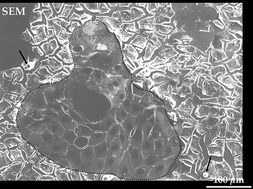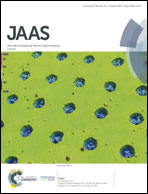Correlative microscopy of freeze-dried cells and studies on intracellular calcium stores with imaging secondary ion mass spectrometry (SIMS)
Abstract
Secondary ion mass spectrometry (SIMS)-based imaging techniques have become effective tools for studies of elements and molecules in biological samples. In the current work, a correlative microscopy approach was applied to cryogenically prepared fractured freeze-dried cells for organelle-level imaging of chemical composition using SIMS. A CAMECA IMS-3f SIMS ion microscope was used for studying the effect of microtubule-perturbing agents, specifically nocodazole and taxol, on intracellular calcium stores. The perturbation of microtubules in renal epithelial LLC-PK1 cells resulted in significant loss of total calcium in both the nucleus and cytoplasm. In another study, the stable isotope 44Ca was used for imaging the influx of calcium in resting and stimulated LLC-PK1 cells. SIMS imaging of two calcium isotopes, 44Ca and 40Ca, in the same cell revealed the distribution of calcium influx in the 44Ca image and endogenous calcium in the 40Ca image. An arginine-vasopressin treatment of cells showed that the Golgi apparatus is sensitive to hormonal stimulation.

- This article is part of the themed collection: SIMS for Biological Applications


 Please wait while we load your content...
Please wait while we load your content...